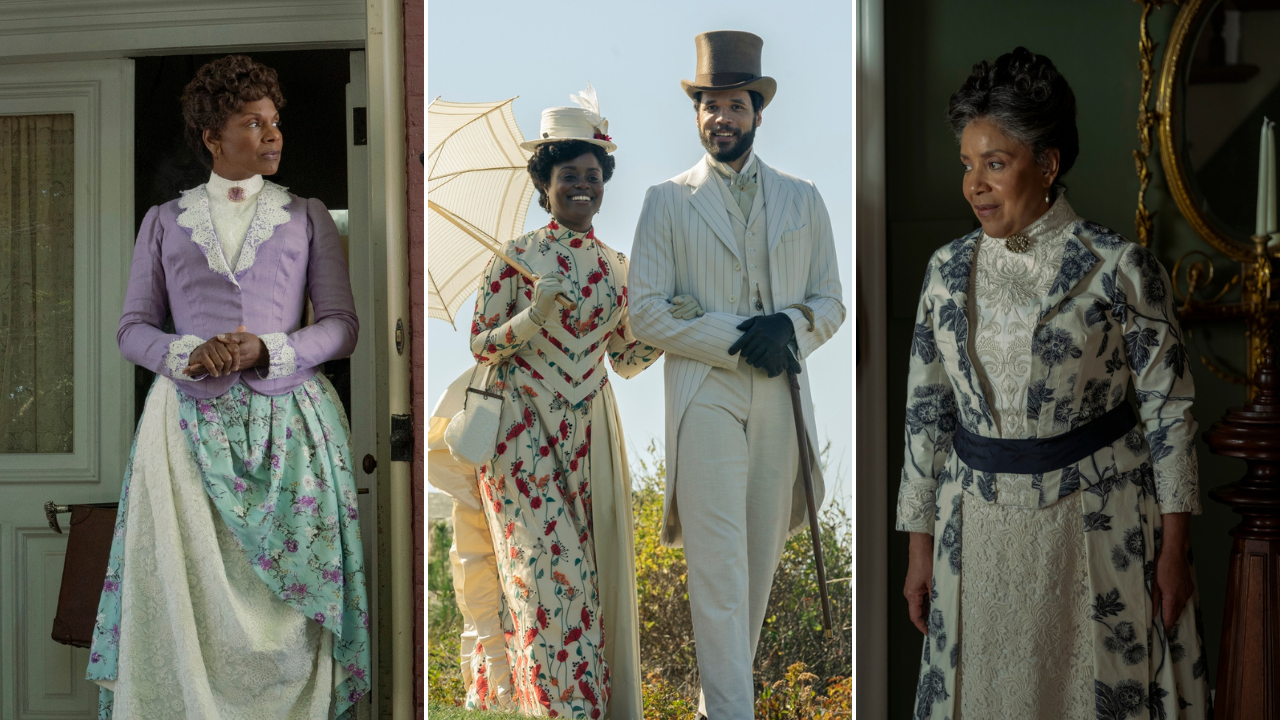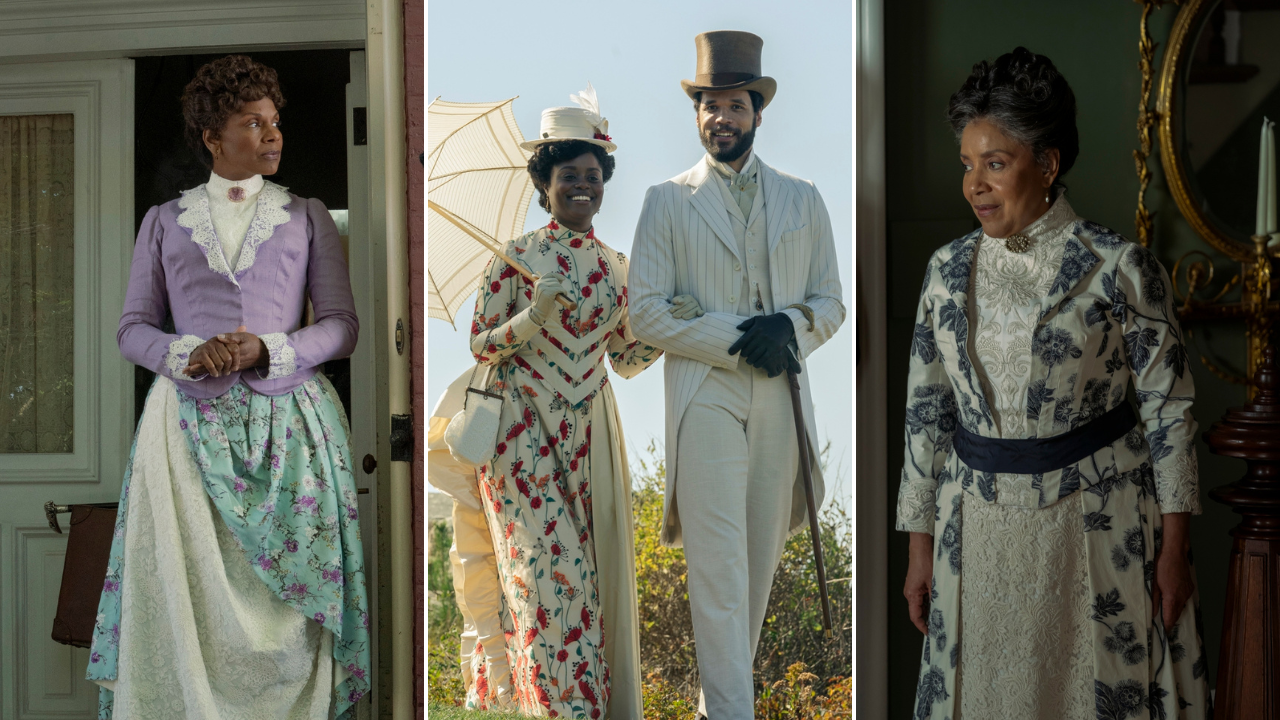
Through the character of Peggy Scott (played by Denée Benton), “The Gilded Age” explores Black life in Brooklyn, New York in the later decades of the 1800s, both in parallel and intertwined with their white counterparts that inhabit Manhattan’s Fifth Avenue. While season two gave us a glimpse into the differences between Black life in the North versus life in the South, this season takes more time to show the internal conflicts of the elite Black communities in the North, using Newport, Rhode Island, as its backdrop.
Newport was featured in the show as a summer destination for the white Manhattan elite in previous seasons, but Peggy’s budding romance with Dr. William Kirkland (played by Jordan Donica), who comes from a wealthy, established family from the seaside city, introduces the audience to its Black society in season three. And though Peggy comes from a privileged family herself, she is met with classism and colorism from his family, specifically its matriarch, Elizabeth (played by Phylicia Rashad).
Elizabeth boasts that she comes from five generations of Rhode Islanders, including a free Black great-grandfather who fought in the Revolutionary War. The show’s writers said they included this detail to show that the Kirkland family did not have a history of enslavement, unlike the Scotts.
Newport’s free Black community was well organized long before the Gilded Age. In 1780, the city’s Black male residents created a Black mutual aid society called the Free African Union Society, which is considered the first of its kind. Its female counterpart was created later in 1809 and named the African Female Benevolent Society, which primarily worked to educate free Black people and their children. The Society established one of the first free Black schools in the nation. By the Gilded Age, Rhode Island’s schools were already desegregated. One of the real-life prominent Black Newport families that inspired the Kirklands was the Van Hornes, whose patriarch, Mahlon Van Horne, became the pastor for the Society’s Union Colored Congregational Church and Rhode Island’s first Black legislator. His son, Alonzo Van Horne, was Rhode Island’s first Black dentist.
Peggy’s character has previously been used to highlight the racism of the North, which was different from that of the South, but still very much present. Though she attains opportunities and access by befriending and working for the Van Rhijn family, Peggy’s interactions with New York white society range from discriminatory to deadly. In episode two of this season, she becomes sick at the Van Rhijn house and is bedridden, but their doctor refuses to treat her because she is a Black woman. This is how she eventually meets William, because her parents have to send a Black doctor to Manhattan to treat her.
What season three of “The Gilded Age” shows is that Peggy not only navigates her life as a Black woman, but as a dark-skinned Black woman who experiences colorism. Her love interest, William, is light-skinned, as is his entire family. Though the two lovers don’t seem to give this any importance, their families immediately clock this as an issue. Peggy’s father, Arthur (played by John Douglas Thompson), expresses his concern to Peggy’s mother, Dorothy (played by Audra McDonald), that if Peggy has lighter children, she’ll be looked at as their nurse instead of their mother. Or that if she has darker children, William’s family will resent them. He makes these comments after meeting William’s family, particularly the icy Elizabeth, and watching her make comments about how her grandchildren need to stay out of the sun to avoid getting darker.
During the initial meeting of the two families, Elizabeth reacts disapprovingly at Peggy’s family’s newer money, particularly Arthur’s, which comes from owning a pharmacy. But one of the most glaring slights by Elizabeth toward Peggy and her family happens when their conversation reveals that Arthur was born enslaved. This may confuse viewers, because given the period, many Black Northerners at the time would have come from the South and been born in slavery. But “The Gilded Age” shows that in elite Black circles, this could be seen as taboo. Dr. Kirkland’s mother uses this as one of many reasons why Peggy is not good enough for her son.
As the finale approaches, Elizabeth, who has failed to dissuade her son William from courting Peggy, might now have the ammunition she needs to break up their relationship. In the previous episode, a friend in Newport who comes over to gossip reveals to her that Peggy had a child out of wedlock from a previous relationship, and that another family adopted the child. Upon hearing this news, Elizabeth gleefully travels from Newport to New York to tell her son about the scandal. The finale preview shows that William will confront Peggy about her secret.
Fans of “The Gilded Age” will understand that the story is more complicated, and though Peggy did have a child when she was not married, she believed the child died during birth, and found out much later that her father had secretly given the boy away to a family in Philadelphia. When she went to find him, she was too late because he had died from scarlet fever.
We’ll find out if Peggy can (or is willing to) overcome her potential mother-in-law’s elitism to be with Dr. William. In the preview, her mother consoles her while she’s crying and tells her, “You are worthy.” Maybe that message, rather than whether she can secure a life partner, is the point of Peggy’s arc this season.





